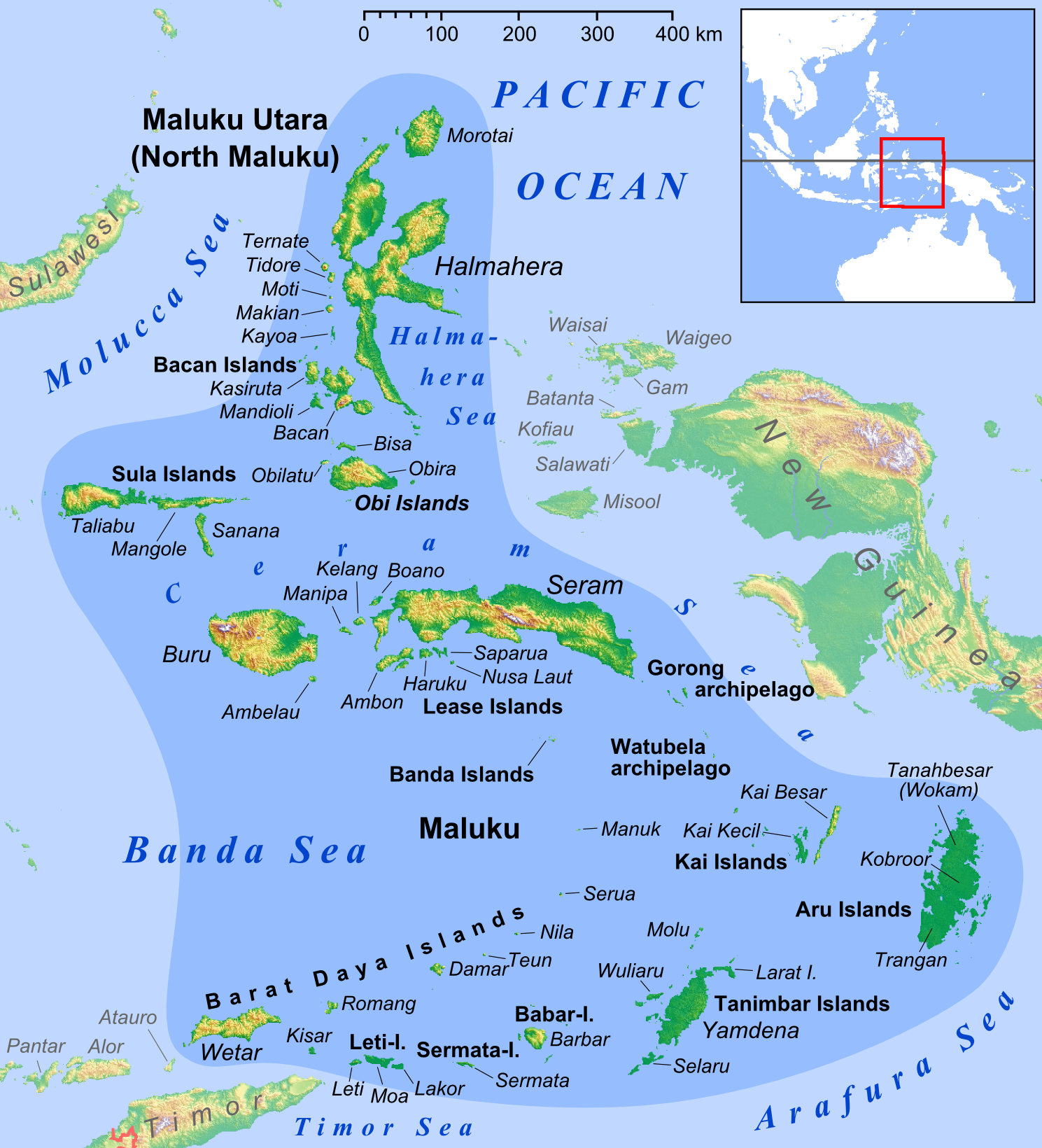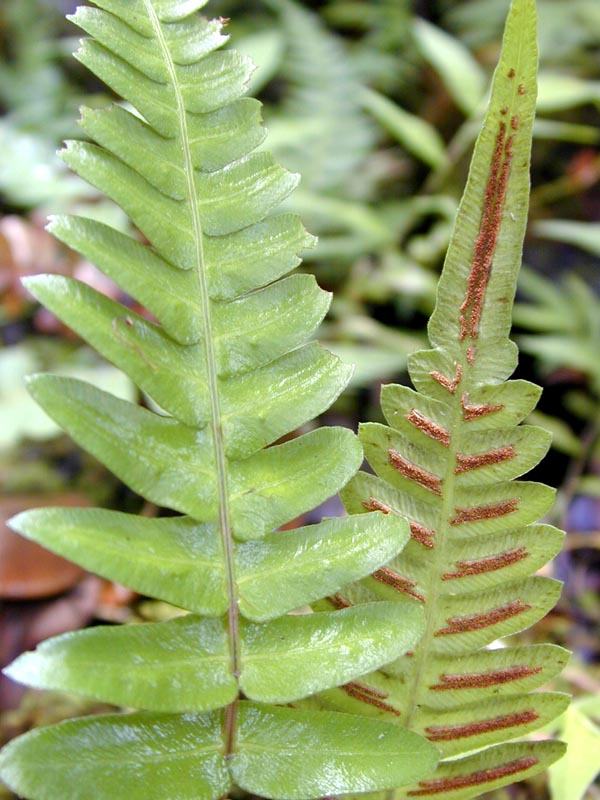|
Alsophila Batjanensis
''Alsophila batjanensis'', synonym ''Cyathea batjanensis'', is a species of tree fern native to the Maluku Islands and western New Guinea, where it grows in rain forest at an altitude of approximately 600 m. The trunk is erect and 2–3 m tall. Fronds are bi- or tripinnate and 1–2 m long. The stipe is spiny, warty and covered with scattered scales that are dark brown and have fragile edges. Sori are round and occur near the fertile pinnule midvein. They are covered by small, narrow indusia that resemble small saucers in appearance. The specific epithet ''batjanensis'' refers to Batjan, known as Bacan The Bacan Islands, formerly also known as the Bachans, Bachians, and Batchians, are a group of islands in the Moluccas in Indonesia. They are mountainous and forested, lying south of Ternate and southwest of Halmahera. The islands are administe ... in English, one of the larger of the Maluku Islands. References batjanensis Flora of the Maluku Islands Flora ... [...More Info...] [...Related Items...] OR: [Wikipedia] [Google] [Baidu] |
Synonym (taxonomy)
The Botanical and Zoological Codes of nomenclature treat the concept of synonymy differently. * In botanical nomenclature, a synonym is a scientific name that applies to a taxon that (now) goes by a different scientific name. For example, Linnaeus was the first to give a scientific name (under the currently used system of scientific nomenclature) to the Norway spruce, which he called ''Pinus abies''. This name is no longer in use, so it is now a synonym of the current scientific name, ''Picea abies''. * In zoology, moving a species from one genus to another results in a different binomen, but the name is considered an alternative combination rather than a synonym. The concept of synonymy in zoology is reserved for two names at the same rank that refers to a taxon at that rank - for example, the name ''Papilio prorsa'' Linnaeus, 1758 is a junior synonym of ''Papilio levana'' Linnaeus, 1758, being names for different seasonal forms of the species now referred to as ''Araschnia le ... [...More Info...] [...Related Items...] OR: [Wikipedia] [Google] [Baidu] |
Sorus
A sorus (pl. sori) is a cluster of sporangia (structures producing and containing spores) in ferns and fungi. A coenosorus (plural coenosori) is a compound sorus composed of multiple, fused sori. Etymology This New Latin word is from Ancient Greek σωρός (''sōrós'' 'stack, pile, heap'). Structure In lichens and other fungi, the sorus is surrounded by an external layer. In some red algae, it may take the form of depression into the thallus. In ferns, the sori form a yellowish or brownish mass on the edge or underside of a fertile frond. In some species, they are protected during development by a scale or film of tissue called the indusium, which forms an umbrella-like cover. Lifecycle significance Sori occur on the sporophyte generation, the sporangia within producing haploid meiospores. As the sporangia mature, the indusium shrivels so that spore release is unimpeded. The sporangia then burst and release the spores. As an aid to identification The shape, arrangemen ... [...More Info...] [...Related Items...] OR: [Wikipedia] [Google] [Baidu] |
Alsophila (plant)
''Alsophila'' is a genus of tree ferns in the family Cyatheaceae. It has also been considered to be a section in the subgenus ''Cyathea'' of the genus ''Cyathea''. Description Species of ''Alsophila'' have a treelike growth habit, with an erect trunk that rarely branches, or sometimes a more shrublike habit, with a creeping stem. Their fronds are large, with a strawlike stalk (stipe), dark brown or black in colour. Brown or dark brown scales are present, with distinct margins. The blade (lamina) of the frond is divided one to three times (one- to three-pinnate). The sori (spore-producing structures) are rounded and borne on smaller veins on the lower surface of the frond. An indusium (a covering to the sori) may or may not be present; if present initially, it may be lost as the frond ages. ''Alsophila'' is now separated from the other genera in the family Cyatheaceae primarily on the basis of molecular phylogenetic studies. The scales on the stalks (petioles) provide a morphol ... [...More Info...] [...Related Items...] OR: [Wikipedia] [Google] [Baidu] |
Bacan
The Bacan Islands, formerly also known as the Bachans, Bachians, and Batchians, are a group of islands in the Moluccas in Indonesia. They are mountainous and forested, lying south of Ternate and southwest of Halmahera. The islands are administered by the South Halmahera Regency of North Maluku Province. They formerly constituted the Sultanate of Bacan. Bacan ( nl, Batjan), formerly also known as Bachian or Batchian, is the group's largest island. The second and third-largest islands are Kasiruta and Mandioli. Bacan Island in 2020 included about 82,387 people, of which about 10,000 live in the capital Labuha; it is subdivided into seven districts. Kasiruta and Mandioli each have over 10,000 inhabitants, and each is subdivided into two districts. A fourth island, Bacan Lomang, forms a twelfth district within the group. There are dozens of smaller islands in the group, which had a total population of 84,075 at the 2010 Census, but by the 2020 Census had risen to 111,517. The offic ... [...More Info...] [...Related Items...] OR: [Wikipedia] [Google] [Baidu] |
Batjan
The Bacan Islands, formerly also known as the Bachans, Bachians, and Batchians, are a group of islands in the Moluccas in Indonesia. They are mountainous and forested, lying south of Ternate and southwest of Halmahera. The islands are administered by the South Halmahera Regency of North Maluku Province. They formerly constituted the Sultanate of Bacan. Bacan ( nl, Batjan), formerly also known as Bachian or Batchian, is the group's largest island. The second and third-largest islands are Kasiruta and Mandioli. Bacan Island in 2020 included about 82,387 people, of which about 10,000 live in the capital Labuha; it is subdivided into seven districts. Kasiruta and Mandioli each have over 10,000 inhabitants, and each is subdivided into two districts. A fourth island, Bacan Lomang, forms a twelfth district within the group. There are dozens of smaller islands in the group, which had a total population of 84,075 at the 2010 Census, but by the 2020 Census had risen to 111,517. The offic ... [...More Info...] [...Related Items...] OR: [Wikipedia] [Google] [Baidu] |
Epithet
An epithet (, ), also byname, is a descriptive term (word or phrase) known for accompanying or occurring in place of a name and having entered common usage. It has various shades of meaning when applied to seemingly real or fictitious people, divinities, objects, and binomial nomenclature. It can also be a descriptive title: for example, Pallas Athena, Phoebus Apollo, Alfred the Great, Suleiman the Magnificent, and Władysław I the Elbow-high. Many English monarchs have traditional epithets: some of the best known are Edward the Confessor, William the Conqueror, Richard the Lionheart, Æthelred the Unready, John Lackland and Bloody Mary. The word ''epithet'' can also refer to an abusive, defamatory, or derogatory phrase. This use as a euphemism is criticized by Martin Manser and other proponents of linguistic prescription. H. W. Fowler complained that "epithet is suffering a vulgarization that is giving it an abusive imputation." Linguistics Epithets are sometimes at ... [...More Info...] [...Related Items...] OR: [Wikipedia] [Google] [Baidu] |
Indusium
A sorus (pl. sori) is a cluster of sporangia (structures producing and containing spores) in ferns and fungi. A coenosorus (plural coenosori) is a compound sorus composed of multiple, fused sori. Etymology This New Latin word is from Ancient Greek σωρός (''sōrós'' 'stack, pile, heap'). Structure In lichens and other fungi, the sorus is surrounded by an external layer. In some red algae, it may take the form of depression into the thallus. In ferns, the sori form a yellowish or brownish mass on the edge or underside of a fertile frond. In some species, they are protected during development by a scale or film of tissue called the indusium, which forms an umbrella-like cover. Lifecycle significance Sori occur on the sporophyte generation, the sporangia within producing haploid meiospores. As the sporangia mature, the indusium shrivels so that spore release is unimpeded. The sporangia then burst and release the spores. As an aid to identification The shape, arrangemen ... [...More Info...] [...Related Items...] OR: [Wikipedia] [Google] [Baidu] |
Pinnule
A leaflet (occasionally called foliole) in botany is a leaf-like part of a compound leaf. Though it resembles an entire leaf, a leaflet is not borne on a main plant stem or branch, as a leaf is, but rather on a petiole or a branch of the leaf. Compound leaves are common in many plant families and they differ widely in morphology. The two main classes of compound leaf morphology are palmate and pinnate. For example, a ''hemp'' plant has palmate compound leaves, whereas some species of ''Acacia'' have pinnate leaves. The ultimate free division (or leaflet) of a compound leaf, or a pinnate subdivision of a multipinnate leaf is called a pinnule or pinnula. Image:Ветвь акации.jpg, Pinnate leaf of a legume with 10 leaflets Image:Mimosa Pudica.gif, ''Mimosa pudica'' folding leaflets inward. See also * Compound leaf A leaf ( : leaves) is any of the principal appendages of a vascular plant stem, usually borne laterally aboveground and specialized for photosyn ... [...More Info...] [...Related Items...] OR: [Wikipedia] [Google] [Baidu] |
Scale (zoology)
In most biological nomenclature, a scale ( grc, λεπίς, lepís; la, squāma) is a small rigid plate that grows out of an animal's skin to provide protection. In lepidopteran (butterfly and moth) species, scales are plates on the surface of the insect wing, and provide coloration. Scales are quite common and have evolved multiple times through convergent evolution, with varying structure and function. Scales are generally classified as part of an organism's integumentary system. There are various types of scales according to shape and to class of animal. Fish scales File:Ganoid scales.png, Ganoid scales on a carboniferous fish ''Amblypterus striatus'' File:Denticules cutanés du requin citron Negaprion brevirostris vus au microscope électronique à balayage.jpg, Placoid scales on a lemon shark (''Negaprion brevirostris'') File:RutilusRutilusScalesLateralLine.JPG, Cycloid scales on a common roach (''Rutilus rutilus'') Fish scales are dermally derived, specifically ... [...More Info...] [...Related Items...] OR: [Wikipedia] [Google] [Baidu] |
Cyatheales
The order Cyatheales, which includes most tree ferns, is a taxonomic order of the fern class, Polypodiopsida. No clear morphological features characterize all of the Cyatheales, but DNA sequence data indicate the order is monophyletic. Some species in the Cyatheales have tree-like growth forms from a vertical rhizome, others have shorter or horizontal expanding rhizomes. Some species have scales on the stems and leaves, while others have hairs. However, most plants in the Cyatheales are tree ferns and have trunk-like stems up to tall. It is unclear how many times the tree form has evolved and been lost in the order.Judd, W.S., C.S. Campbell, E.A. Kellogg, P.F. Stevens, and M.J. Donoghue (Eds.) 2008. Plant Systematics: A Phylogenetic Approach, Third Edition. Sinauer Associates, Sunderland, Massachusetts, USA. Description While the Cyatheales have been shown to be monophyletic through molecular analysis, no prominent morphological characteristics are common to the entire group ... [...More Info...] [...Related Items...] OR: [Wikipedia] [Google] [Baidu] |
Stipe (botany)
In botany, a stipe is a stalk that supports some other structure. The precise meaning is different depending on which taxonomic group is being described. file:Helicteres-Yucatán-Flowers.jpg, The long stipe of a '' Helicteres'' flower. file:Helicteres-Yucatán-Fruits.jpg, remains as each flower forms a fruit. In the case of ferns, the stipe is only the petiole from the rootstock to the beginning of the leaf tissue, or lamina. The continuation of the structure within the lamina is then termed a rachis. In flowering plants, the term is often used in reference to a stalk that sometimes supports a flower's ovary. In orchids, the stipe or caudicle is the stalk-like support of the pollinia. It is a non-viscid band or strap connecting the pollinia with the viscidium (the viscid part of the rostellum or beak). A stipe is also a structure found in organisms that are studied by botanists but that are no longer classified as plants. It may be the stem-like part of the thallus of a mus ... [...More Info...] [...Related Items...] OR: [Wikipedia] [Google] [Baidu] |
Tripinnate
Pinnation (also called pennation) is the arrangement of feather-like or multi-divided features arising from both sides of a common axis. Pinnation occurs in biological morphology, in crystals, such as some forms of ice or metal crystals, and in patterns of erosion or stream beds. The term derives from the Latin word ''pinna'' meaning "feather", "wing", or "fin". A similar concept is "pectination," which is a comb-like arrangement of parts (arising from one side of an axis only). Pinnation is commonly referred to in contrast to "palmation," in which the parts or structures radiate out from a common point. The terms "pinnation" and "pennation" are cognate, and although they are sometimes used distinctly, there is no consistent difference in the meaning or usage of the two words.Jackson, Benjamin, Daydon; A Glossary of Botanic Terms with their Derivation and Accent; Published by Gerald Duckworth & Co. London, 4th ed 1928 Plants Botanically, pinnation is an arrangement of discre ... [...More Info...] [...Related Items...] OR: [Wikipedia] [Google] [Baidu] |




.jpg)

